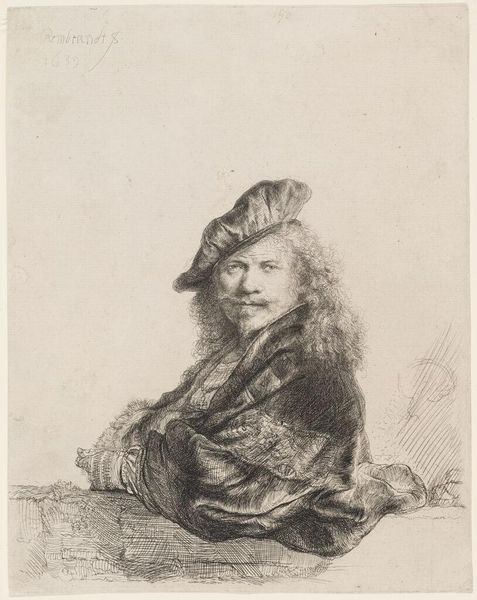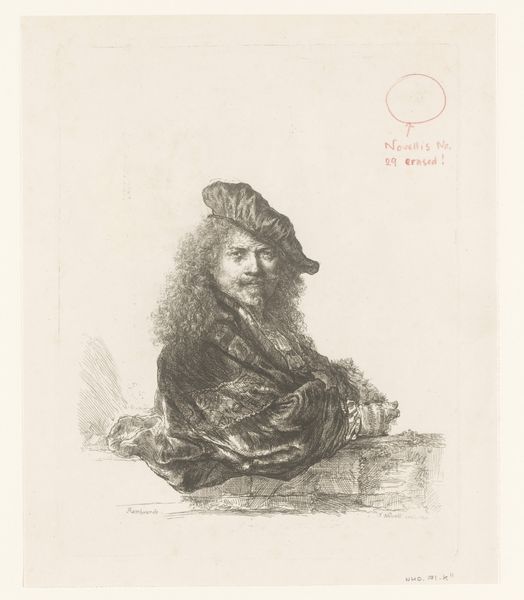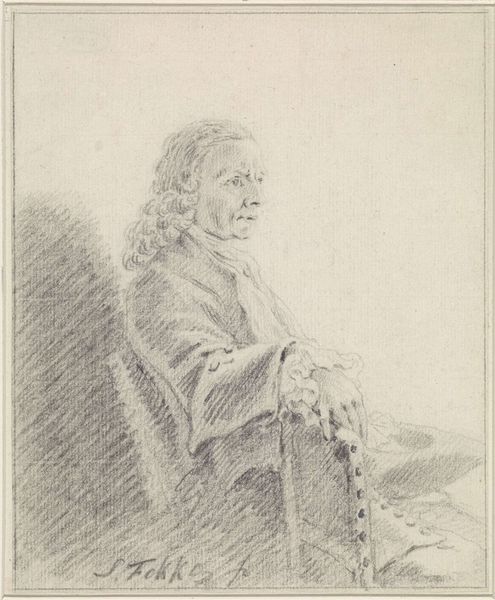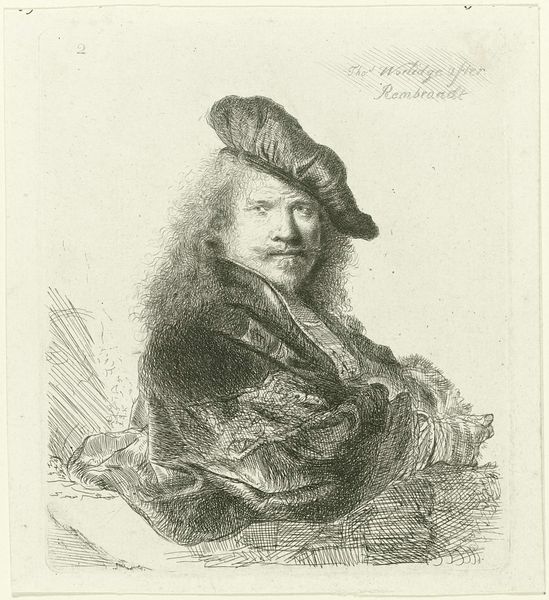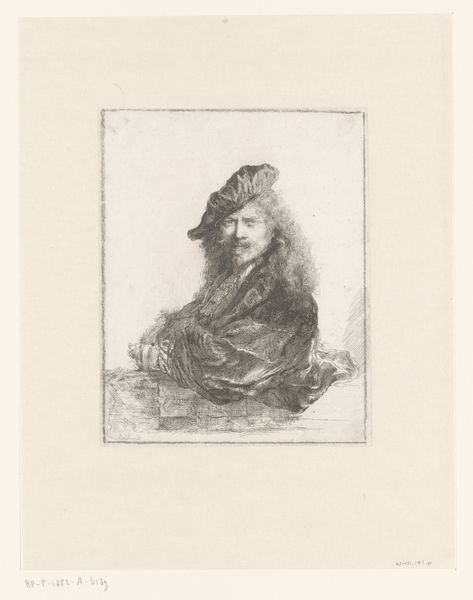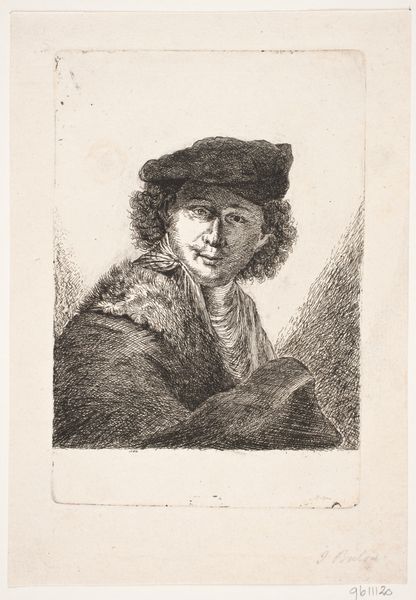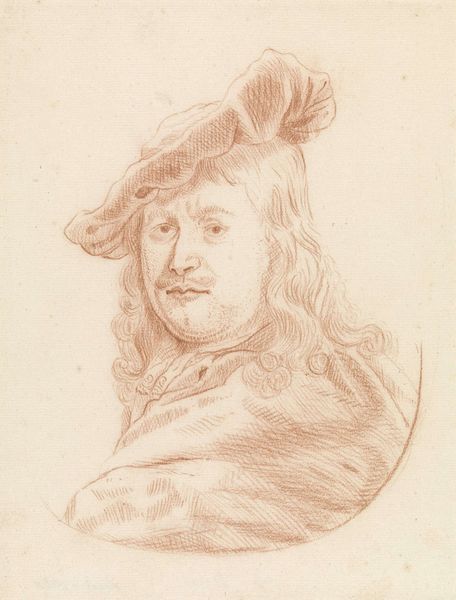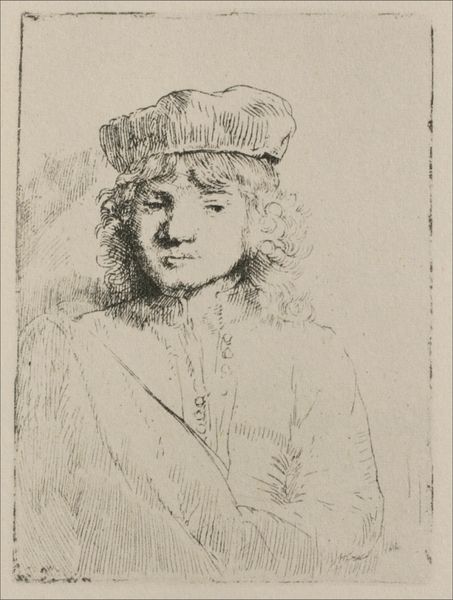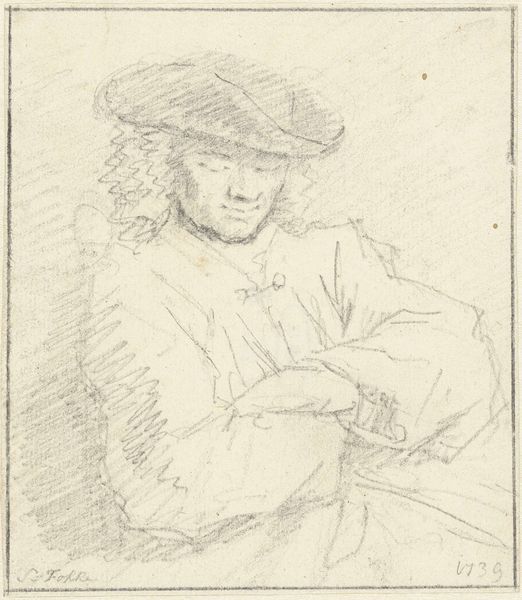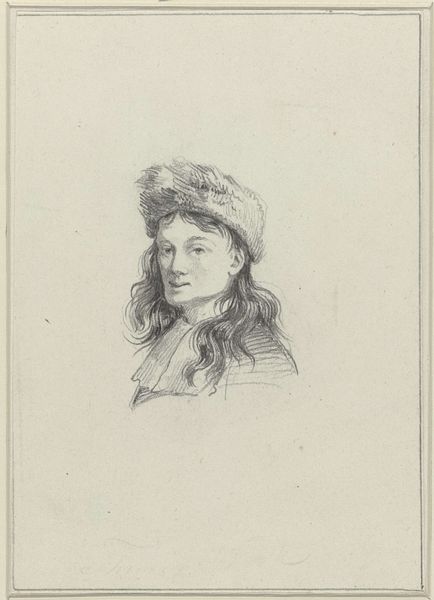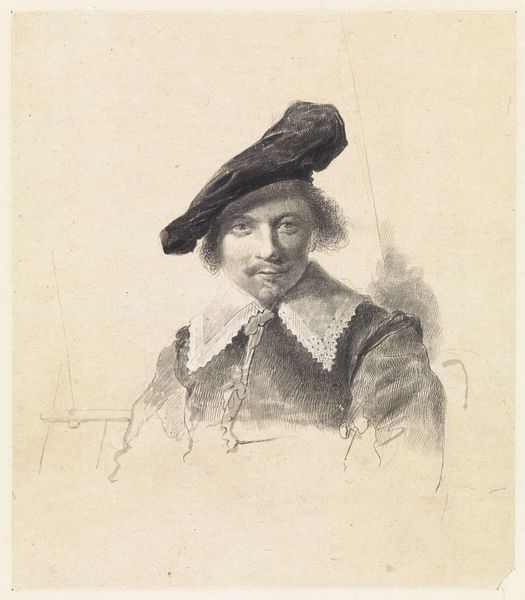
drawing, etching
#
portrait
#
drawing
#
self-portrait
#
baroque
#
dutch-golden-age
#
etching
#
14_17th-century
Copyright: Public Domain
Curator: Welcome. Before us is Rembrandt van Rijn's "Self-Portrait leaning on a stone sill," created in 1639. This piece is currently held in the Städel Museum. Editor: There's something quite direct about it. Even though it’s an etching, so technically reproducible, the lines give it this immediate feeling, as though he's looking directly at us, the viewer. Almost confrontational. Curator: Indeed. This particular self-portrait gains considerable significance when considered alongside the economic and social structures that defined the Dutch Golden Age. The art market was booming and Rembrandt strategically placed himself in the role of both artist and successful merchant, very consciously constructing an image. Editor: The clothes, the hat... that's no accident, is it? All of this carefully designed for self-fashioning. What can you say about the technique itself? Curator: Well, Rembrandt employed etching, a process allowing for multiples but still demanding immense skill and manual labor in its preparation and printing. It's fascinating how an etching like this could have been relatively affordable for the rising middle class who desired art to showcase their status. Editor: Look closely, you can almost feel the textures of the velvet cap, the fur around his shoulders... materials indicative of wealth and success that needed labour to be transformed into these objects. Curator: His choice of clothing certainly broadcasts his commercial acumen, aligning himself with the era's fashion, appealing to the emerging bourgeoisie, the intended art consumers. Rembrandt effectively utilizes imagery to communicate social standing and savvy marketing skills. Editor: Considering the printmaking process itself is significant. Unlike painting, etchings were more readily available to a wider public. Did Rembrandt use this access to shape public opinion? To create a recognizable 'brand', so to speak? Curator: Undoubtedly. It also raises questions regarding art's function and purpose, back then and nowadays. To what degree do cultural institutions such as the Stedel shape our understanding? How much has Rembrandt managed his legacy by controlling the circulation of such images? Editor: That layering of intent is really thought-provoking. Seeing this work, focusing on those issues, that’s shifted my view of it entirely. Curator: Exactly, understanding art through its production means challenges our pre-conceived notions, highlighting complexities behind the artist, but also questioning museums role nowadays.
Comments
Join the conversation
Join millions of artists and users on Artera today and experience the ultimate creative platform.
